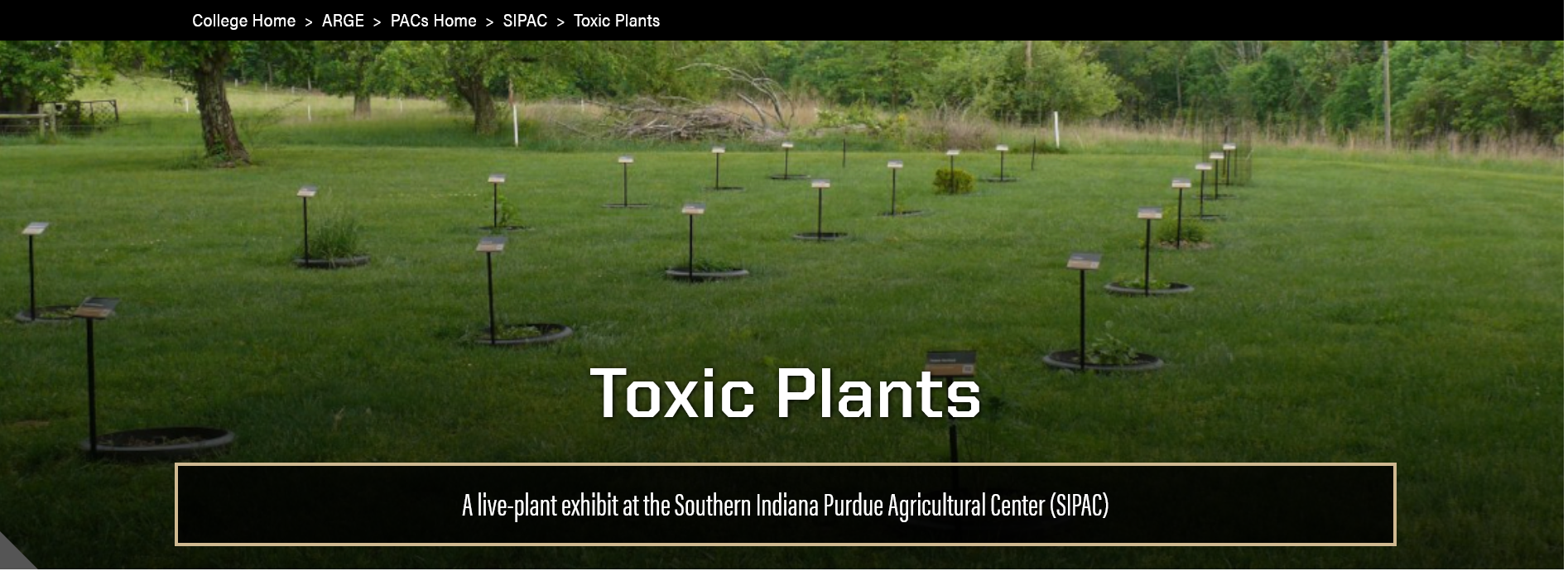Recent conversations with individuals about poison hemlock and cressleaf groundsel, plants with toxicity concerns, prompts me to inform producers and agricultural professionals about the “Toxic Plant Exhibit” at the Southern Indiana Agricultural Center. The exhibit has 21 plants, each growing in a two-foot diameter ring. Placards identify the plants. Each placard also has a QR code that takes you to Toxic Plants (purdue.edu). Information provided includes photographs, general growth characteristics, details about where the plant is most likely found and when it is of most concern, what is known about toxicity symptoms, and amount of the plant consumed that can cause symptoms and possible death. The team that developed the exhibit were Jacob E. Tower, Purdue undergraduate student; Grant Burcham, Animal Disease Diagnostic Laboratory Diagnostician; Jason Tower, Southern Indiana Purdue Agricultural Center Superintendent; Molley Hasenour, Purdue Extension Educator; Keith Johnson, Purdue Forage Specialist, and Marcus Mues, Purdue Agronomy Digital Content Specialist. Visiting this website to learn about some plants that may cause livestock problems before the plant is grazed, or fed as hay or silage is encouraged.



